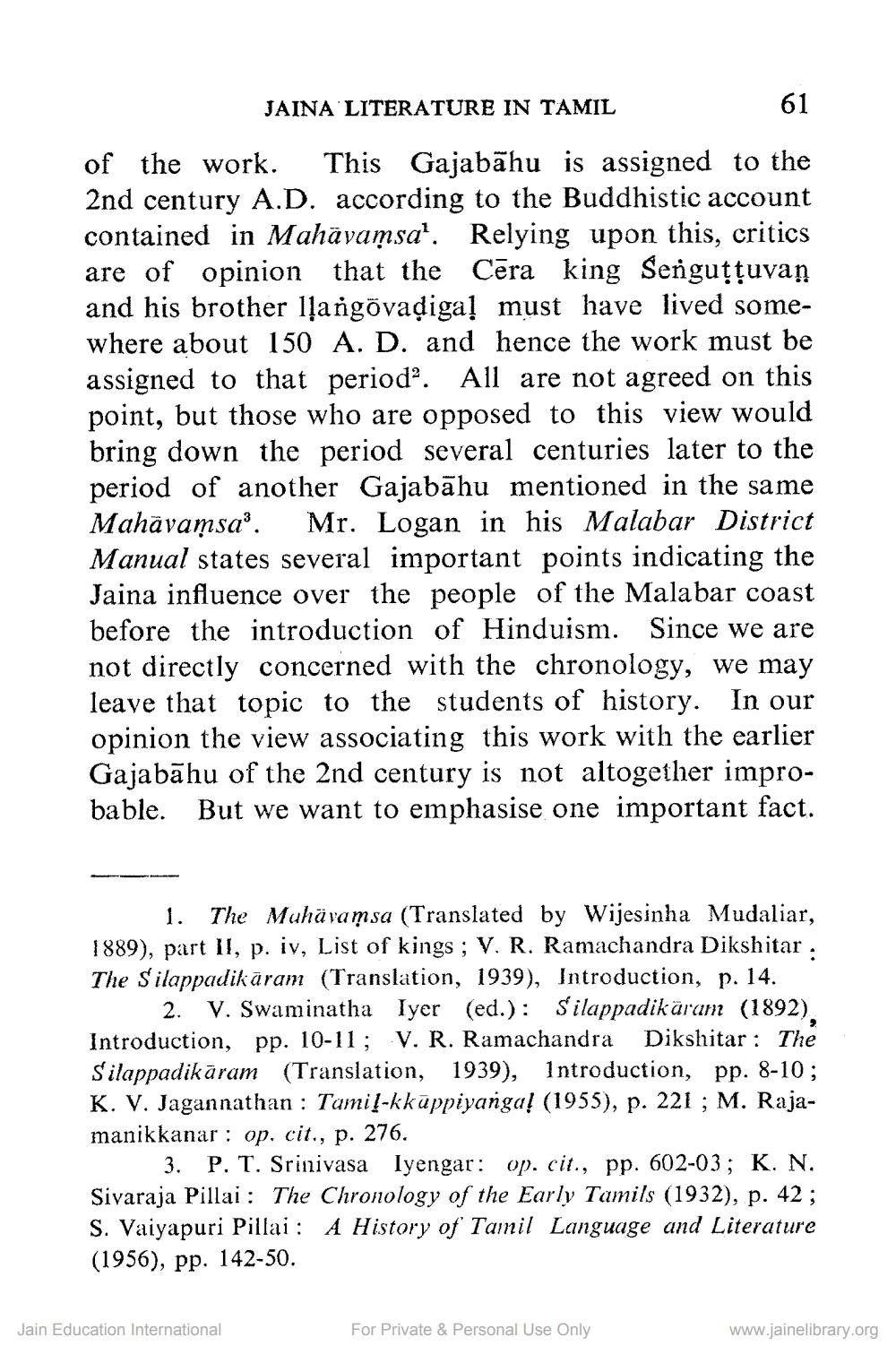________________
61
of the work. This Gajabahu is assigned to the 2nd century A.D. according to the Buddhistic account contained in Mahāvamsa1. Relying upon this, critics are of opinion that the Cēra king Senguṭṭuvan and his brother llangōvaḍigal must have lived somewhere about 150 A. D. and hence the work must be assigned to that period. All are not agreed on this point, but those who are opposed to this view would bring down the period several centuries later to the period of another Gajabahu mentioned in the same Mahāvamsa3. Mr. Logan in his Malabar District Manual states several important points indicating the Jaina influence over the people of the Malabar coast before the introduction of Hinduism. Since we are not directly concerned with the chronology, we may leave that topic to the students of history. In our opinion the view associating this work with the earlier Gajabahu of the 2nd century is not altogether improbable. But we want to emphasise one important fact.
JAINA LITERATURE IN TAMIL
1. The Mahavamsa (Translated by Wijesinha Mudaliar, 1889), part II, p. iv, List of kings; V. R. Ramachandra Dikshitar. The Silappadik āram (Translation, 1939), Introduction, p. 14.
2. V. Swaminatha Iyer (ed.): Silappadikāram (1892), Introduction, pp. 10-11; V. R. Ramachandra Dikshitar: The Silappadikaram (Translation, 1939), Introduction, pp. 8-10; K. V. Jagannathan: Tamil-kkāppiyanga! (1955), p. 221; M. Rajamanikkanar: op. cit., p. 276.
3. P. T. Srinivasa Iyengar: op. cit., pp. 602-03; K. N. Sivaraja Pillai: The Chronology of the Early Tamils (1932), p. 42; S. Vaiyapuri Pillai: A History of Tamil Language and Literature (1956), pp. 142-50.
Jain Education International
For Private & Personal Use Only
www.jainelibrary.org




